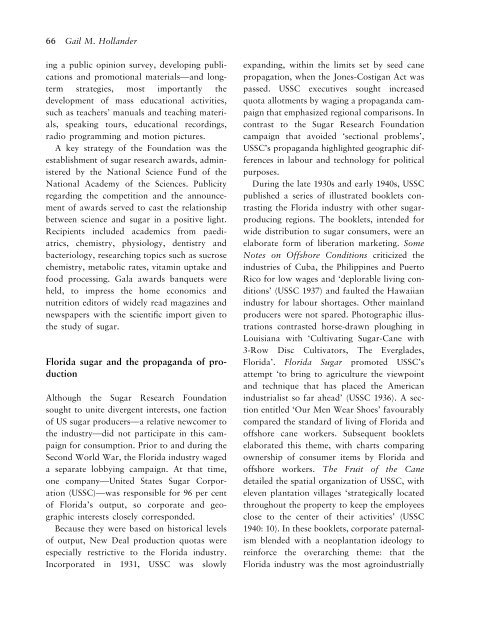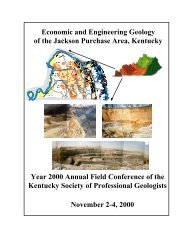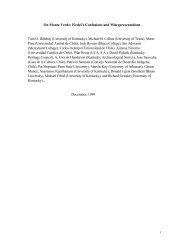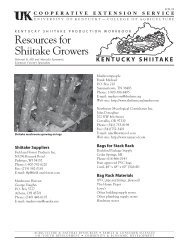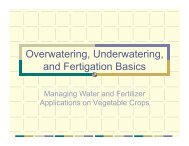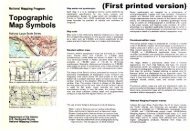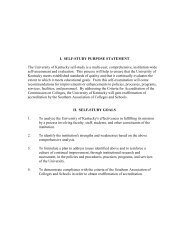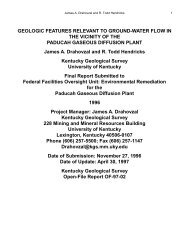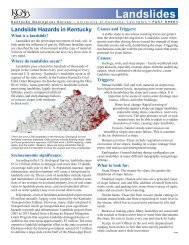Re-naturalizing sugar: narratives of place, production and ...
Re-naturalizing sugar: narratives of place, production and ...
Re-naturalizing sugar: narratives of place, production and ...
You also want an ePaper? Increase the reach of your titles
YUMPU automatically turns print PDFs into web optimized ePapers that Google loves.
66 Gail M. Holl<strong>and</strong>er<br />
ing a public opinion survey, developing publications<br />
<strong>and</strong> promotional materials—<strong>and</strong> longterm<br />
strategies, most importantly the<br />
development <strong>of</strong> mass educational activities,<br />
such as teachers’ manuals <strong>and</strong> teaching materials,<br />
speaking tours, educational recordings,<br />
radio programming <strong>and</strong> motion pictures.<br />
A key strategy <strong>of</strong> the Foundation was the<br />
establishment <strong>of</strong> <strong>sugar</strong> research awards, administered<br />
by the National Science Fund <strong>of</strong> the<br />
National Academy <strong>of</strong> the Sciences. Publicity<br />
regarding the competition <strong>and</strong> the announcement<br />
<strong>of</strong> awards served to cast the relationship<br />
between science <strong>and</strong> <strong>sugar</strong> in a positive light.<br />
<strong>Re</strong>cipients included academics from paediatrics,<br />
chemistry, physiology, dentistry <strong>and</strong><br />
bacteriology, researching topics such as sucrose<br />
chemistry, metabolic rates, vitamin uptake <strong>and</strong><br />
food processing. Gala awards banquets were<br />
held, to impress the home economics <strong>and</strong><br />
nutrition editors <strong>of</strong> widely read magazines <strong>and</strong><br />
newspapers with the scientific import given to<br />
the study <strong>of</strong> <strong>sugar</strong>.<br />
Florida <strong>sugar</strong> <strong>and</strong> the propag<strong>and</strong>a <strong>of</strong> <strong>production</strong><br />
Although the Sugar <strong>Re</strong>search Foundation<br />
sought to unite divergent interests, one faction<br />
<strong>of</strong> US <strong>sugar</strong> producers—a relative newcomer to<br />
the industry—did not participate in this campaign<br />
for consumption. Prior to <strong>and</strong> during the<br />
Second World War, the Florida industry waged<br />
a separate lobbying campaign. At that time,<br />
one company—United States Sugar Corporation<br />
(USSC)—was responsible for 96 per cent<br />
<strong>of</strong> Florida’s output, so corporate <strong>and</strong> geographic<br />
interests closely corresponded.<br />
Because they were based on historical levels<br />
<strong>of</strong> output, New Deal <strong>production</strong> quotas were<br />
especially restrictive to the Florida industry.<br />
Incorporated in 1931, USSC was slowly<br />
exp<strong>and</strong>ing, within the limits set by seed cane<br />
propagation, when the Jones-Costigan Act was<br />
passed. USSC executives sought increased<br />
quota allotments by waging a propag<strong>and</strong>a campaign<br />
that emphasized regional comparisons. In<br />
contrast to the Sugar <strong>Re</strong>search Foundation<br />
campaign that avoided ‘sectional problems’,<br />
USSC’s propag<strong>and</strong>a highlighted geographic differences<br />
in labour <strong>and</strong> technology for political<br />
purposes.<br />
During the late 1930s <strong>and</strong> early 1940s, USSC<br />
published a series <strong>of</strong> illustrated booklets contrasting<br />
the Florida industry with other <strong>sugar</strong>producing<br />
regions. The booklets, intended for<br />
wide distribution to <strong>sugar</strong> consumers, were an<br />
elaborate form <strong>of</strong> liberation marketing. Some<br />
Notes on Offshore Conditions criticized the<br />
industries <strong>of</strong> Cuba, the Philippines <strong>and</strong> Puerto<br />
Rico for low wages <strong>and</strong> ‘deplorable living conditions’<br />
(USSC 1937) <strong>and</strong> faulted the Hawaiian<br />
industry for labour shortages. Other mainl<strong>and</strong><br />
producers were not spared. Photographic illustrations<br />
contrasted horse-drawn ploughing in<br />
Louisiana with ‘Cultivating Sugar-Cane with<br />
3-Row Disc Cultivators, The Everglades,<br />
Florida’. Florida Sugar promoted USSC’s<br />
attempt ‘to bring to agriculture the viewpoint<br />
<strong>and</strong> technique that has <strong>place</strong>d the American<br />
industrialist so far ahead’ (USSC 1936). A section<br />
entitled ‘Our Men Wear Shoes’ favourably<br />
compared the st<strong>and</strong>ard <strong>of</strong> living <strong>of</strong> Florida <strong>and</strong><br />
<strong>of</strong>fshore cane workers. Subsequent booklets<br />
elaborated this theme, with charts comparing<br />
ownership <strong>of</strong> consumer items by Florida <strong>and</strong><br />
<strong>of</strong>fshore workers. The Fruit <strong>of</strong> the Cane<br />
detailed the spatial organization <strong>of</strong> USSC, with<br />
eleven plantation villages ‘strategically located<br />
throughout the property to keep the employees<br />
close to the center <strong>of</strong> their activities’ (USSC<br />
1940: 10). In these booklets, corporate paternalism<br />
blended with a neoplantation ideology to<br />
reinforce the overarching theme: that the<br />
Florida industry was the most agroindustrially


